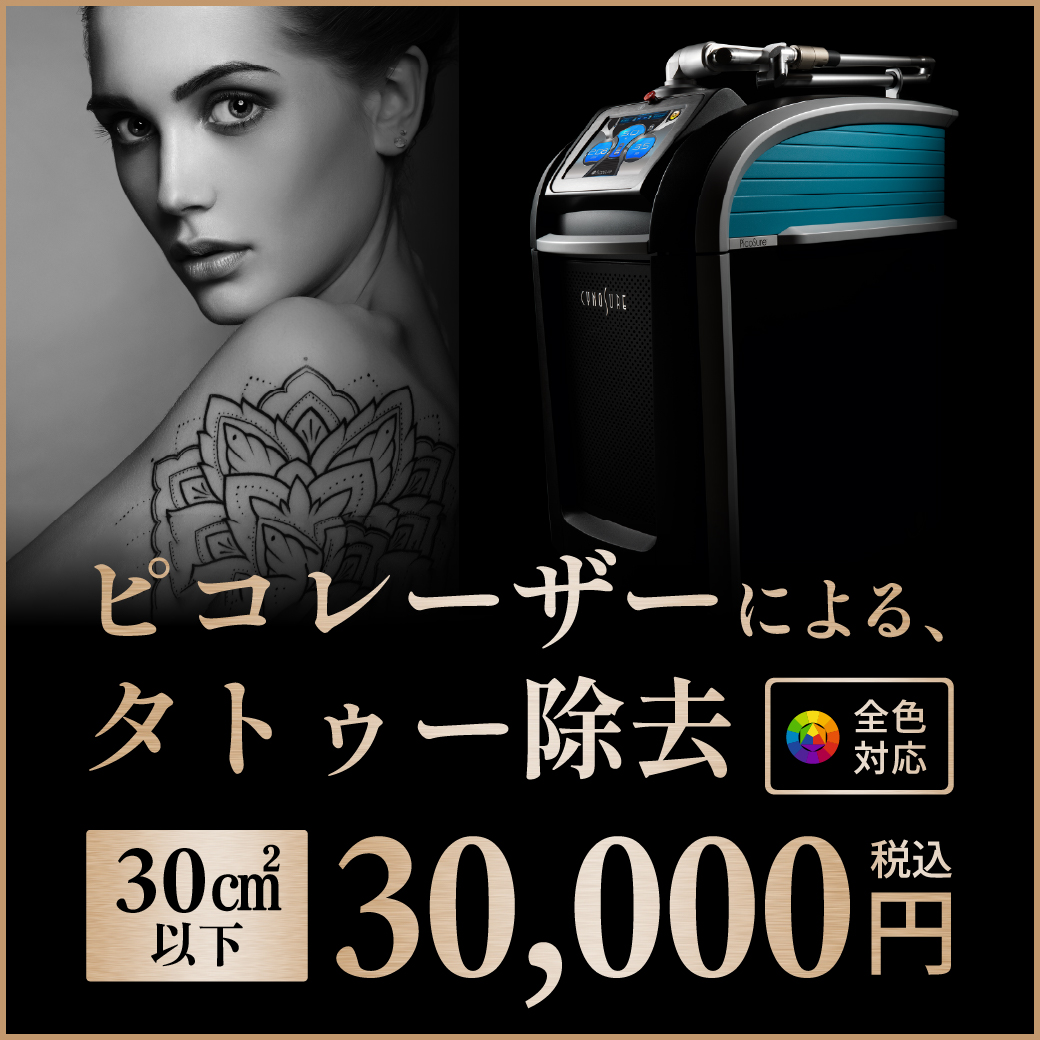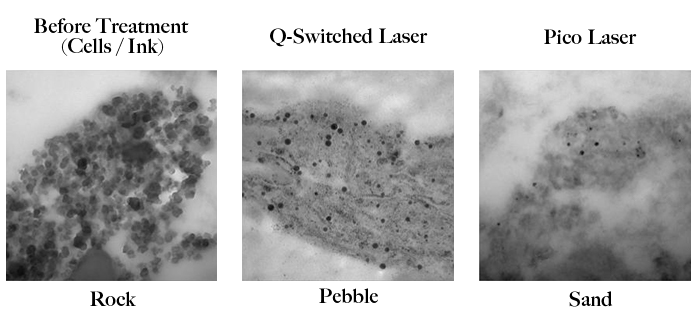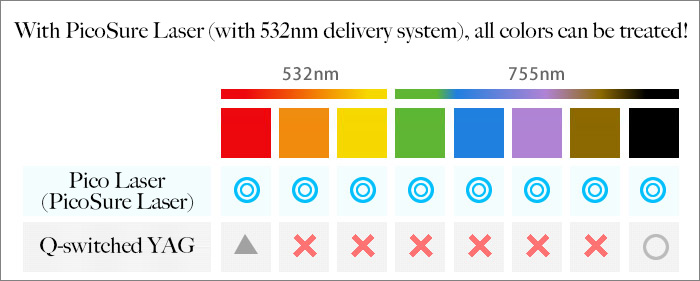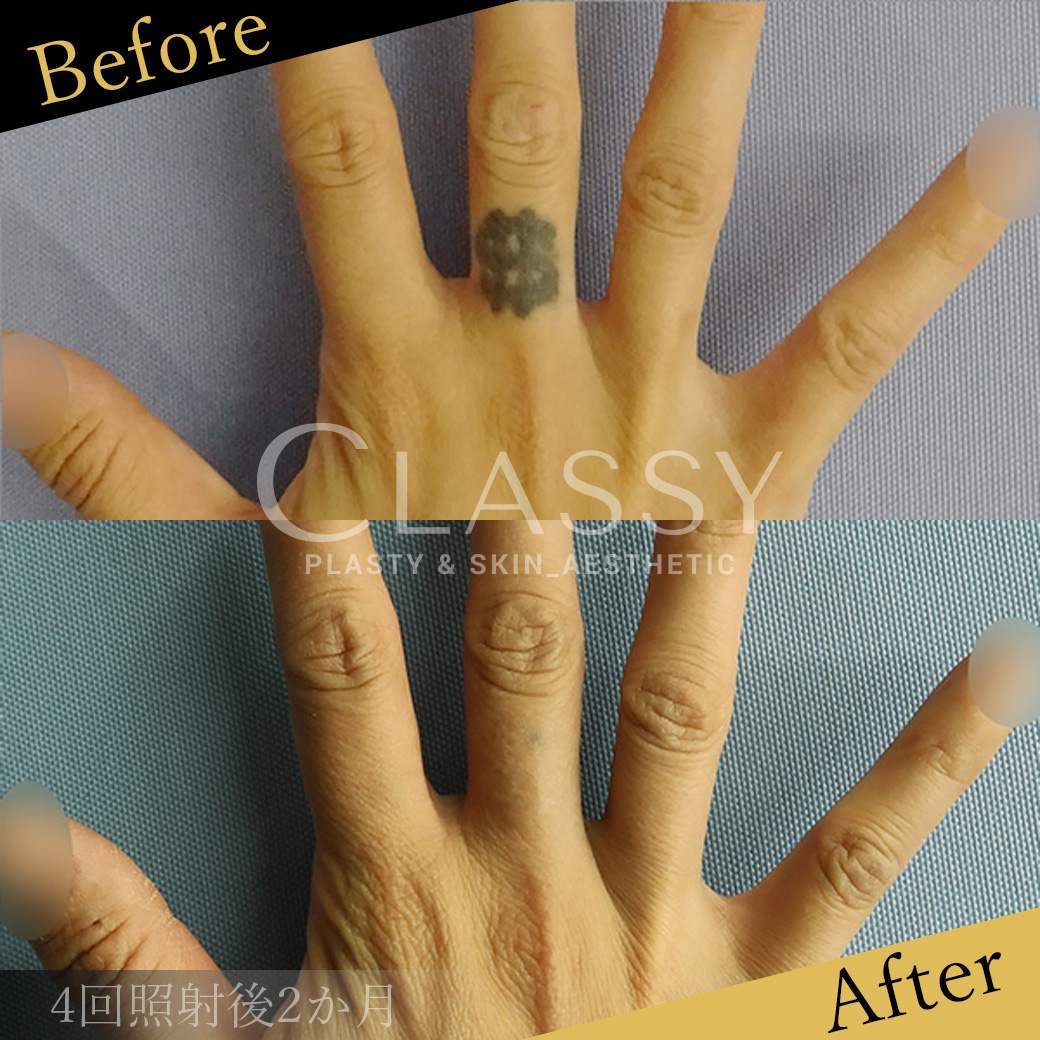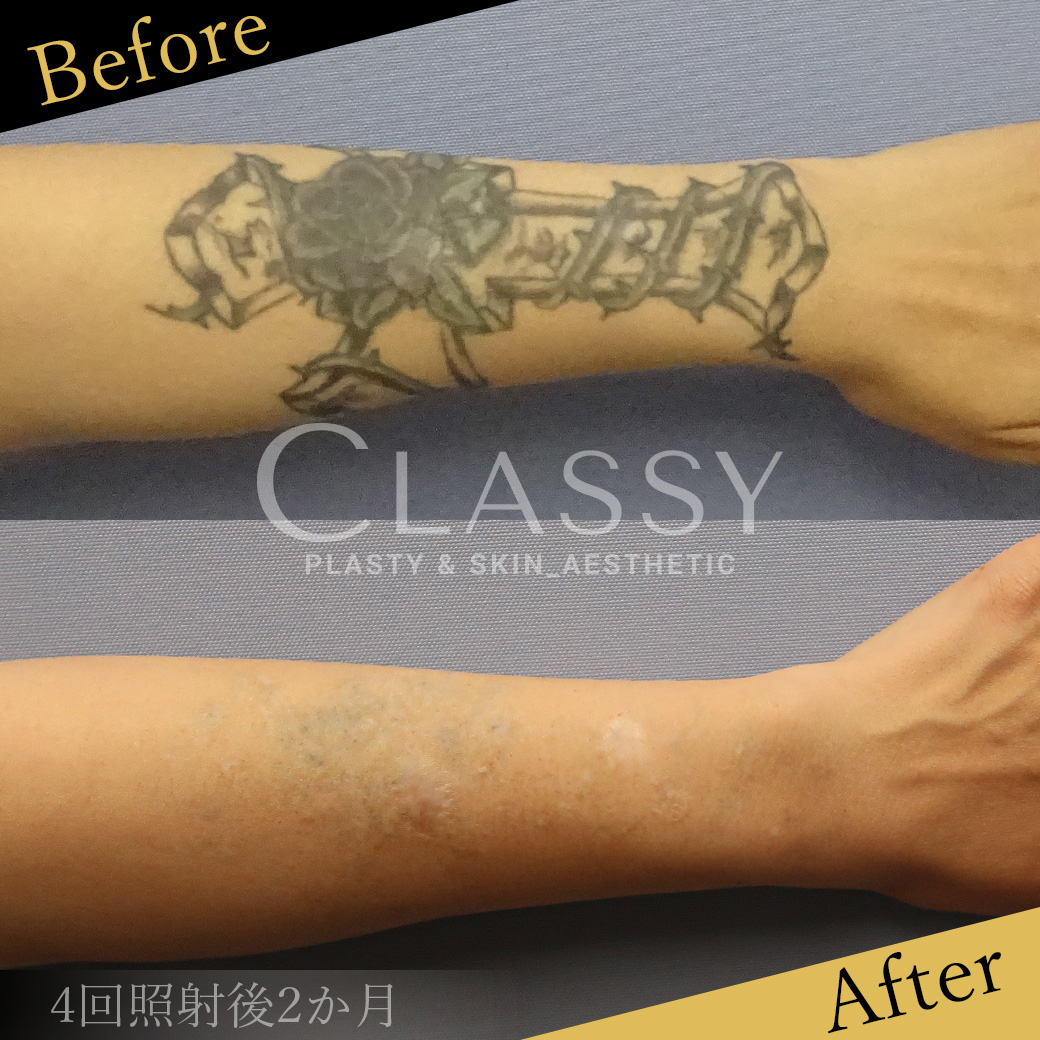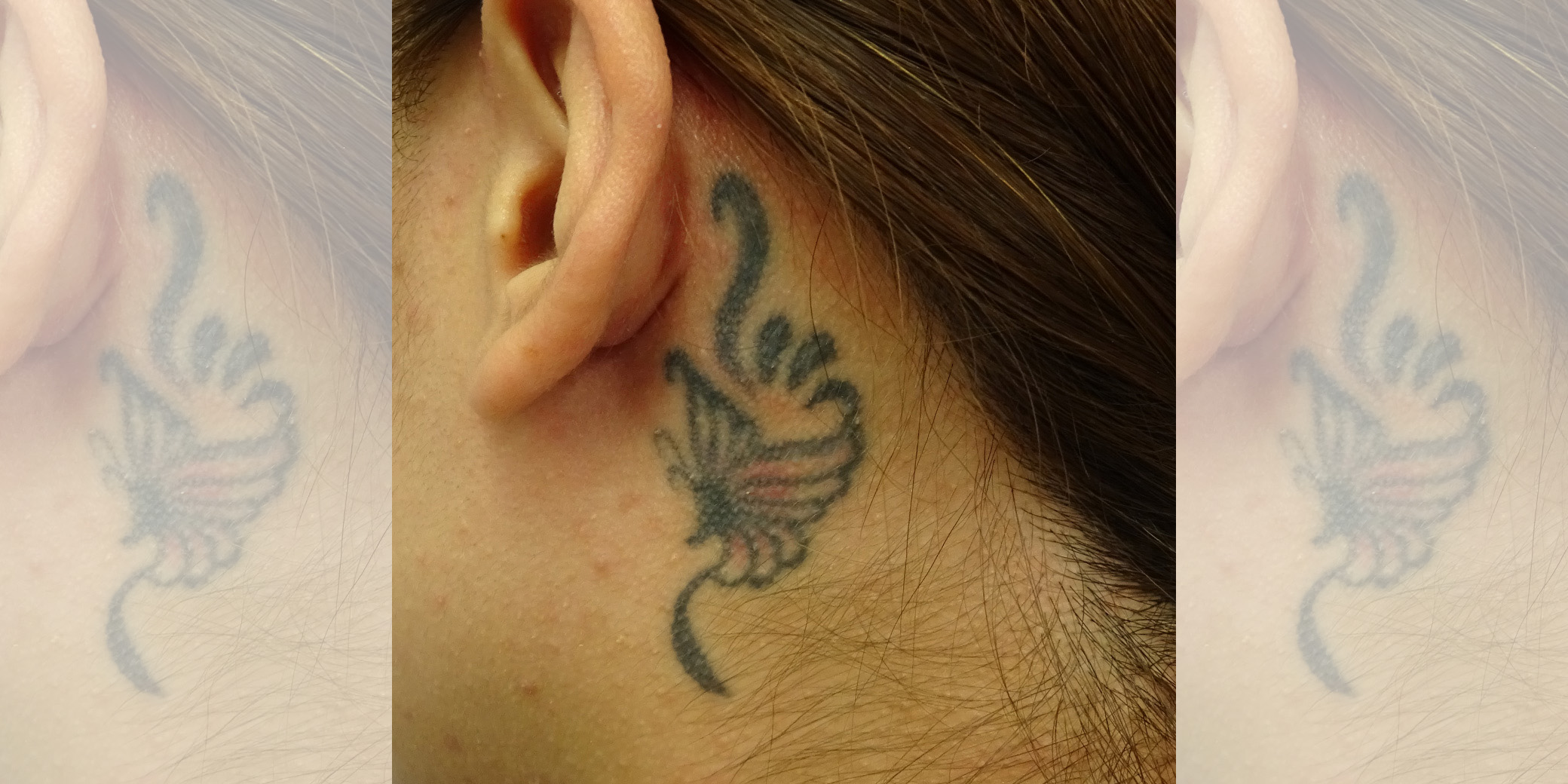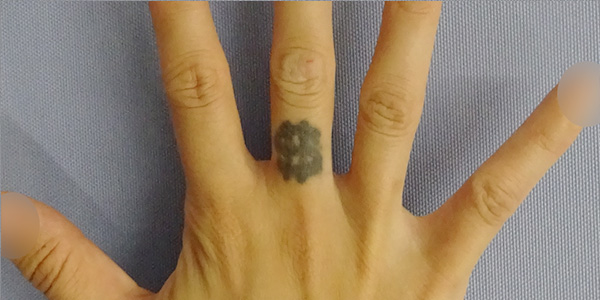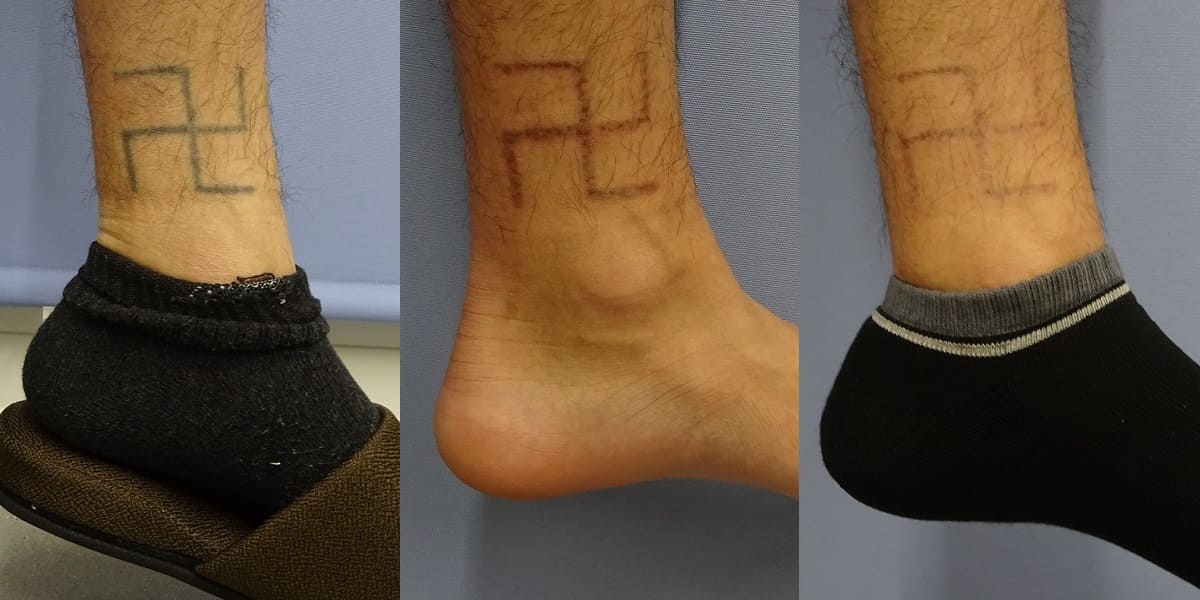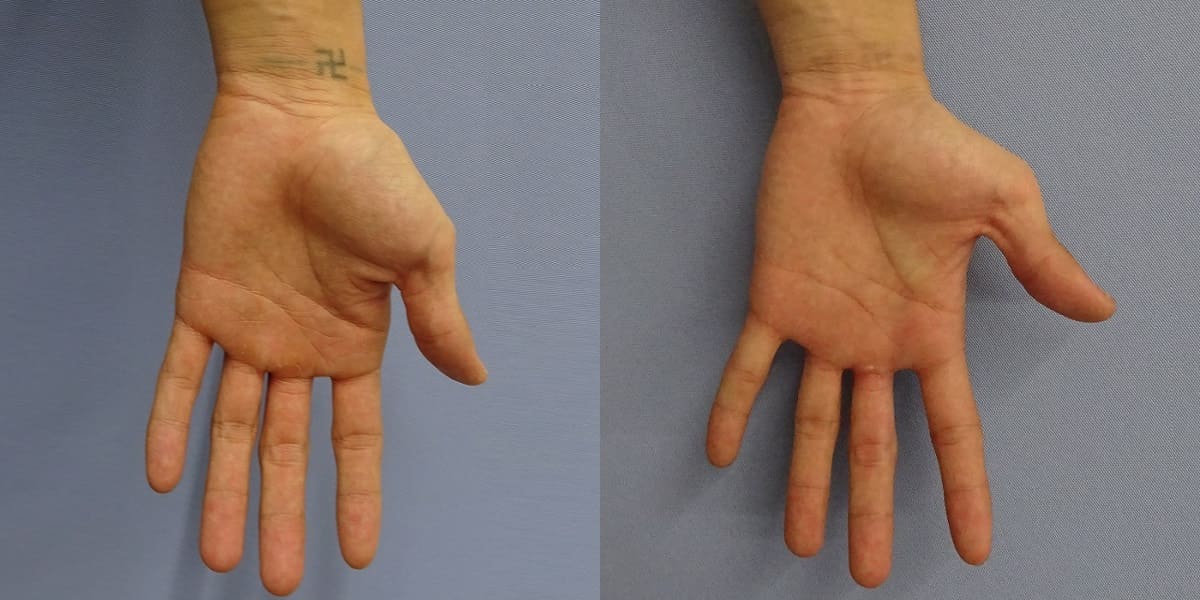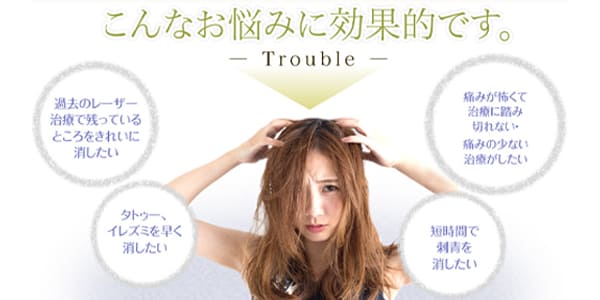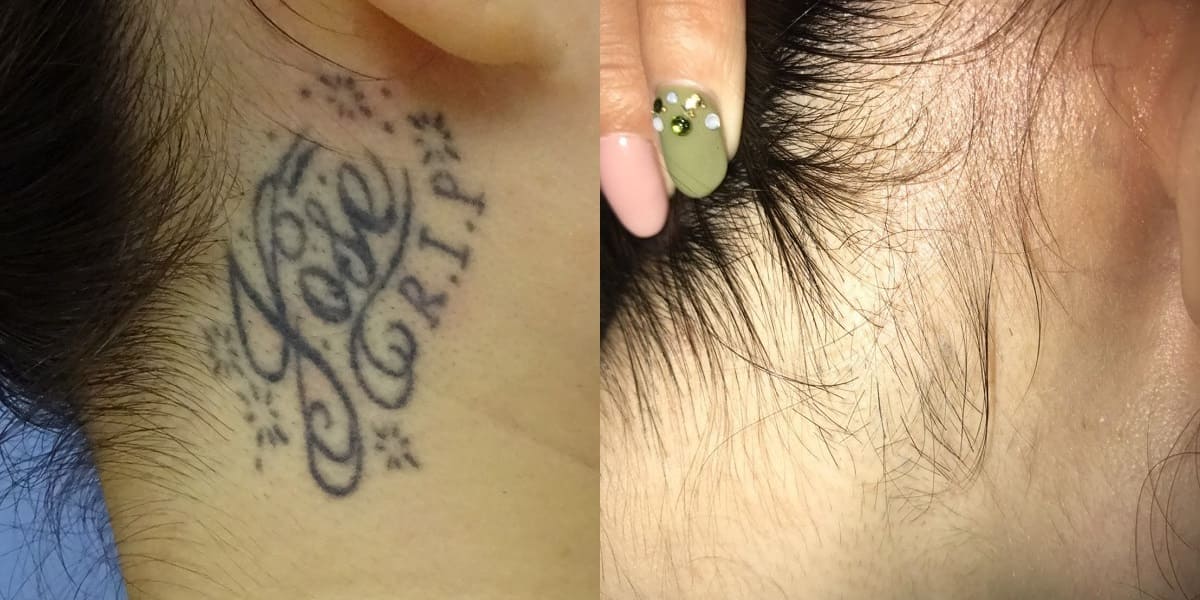*Price is per session.
*Estimated sessions: 1–10 (Varies greatly by individual)
- ≤ 30 cm² (Approx. 5.4×5.4 cm): ¥30,000 (tax included)
- 31-50 cm² (Approx. 7×7 cm): ¥40,000 (tax included)
- 51-100 cm² (Approx. 10×10 cm): ¥50,000 (tax included)
- 101-150 cm² (Approx. 12.2×12.2 cm): ¥60,000 (tax included)
- 151-200 cm² (Approx. 14.1×14.1 cm): ¥70,000 (tax included)
- 201-250 cm² (Approx. 15.8×15.8 cm): ¥80,000 (tax included)
- 251-300 cm² (Approx. 17.3×17.3 cm)¥90,000 (tax included)
- 301-350 cm² (Approx. 18.7×18.7 cm): ¥100,000 (tax included)
- 351-400 cm² (Approx. 20×20 cm): ¥110,000 (tax included)
- 401-450 cm² (Approx. 21.2×21.2 cm): ¥120,000 (tax included)
- 451 cm² ≤: Available upon consultation
- Local Anesthesia
└≤ 100 cm²: ¥4,000 (tax included)
└≤ 200 cm²: ¥8,000 (tax included)
- Oral Medication for Pigmentation Prevention (3 types): ¥2,000 × 3 = ¥6,000 (tax included)
*We recommend purchasing 2 to 3 sets per laser session.
This treatment targets tattoo pigments by delivering laser energy to the ink, causing a scabbing process and stimulating phagocytosis by immune cells, which gradually breaks down and eliminates the tattoo over time. It is important to evaluate the results over a period of several months.
- Pain, Bruising, Warmth, and Itching: Pain, bruising, warmth, and itching may occur as a result of the laser’s photomechanical effect. These symptoms usually tend to resolve on their own without intervention. However, if you have any concerns or if symptoms persist, please do not hesitate to return for a follow-up consultation.
- Cellulitis: If the treated area is not kept clean, there is a rare possibility of developing a skin infection, such as cellulitis. In such cases, outpatient treatment with oral or intravenous antibiotics may be required.
- Treated Skin: It may be difficult for the treated skin to return completely to its original condition. Changes in skin texture may occur, and in some cases, hypopigmentation (white spots) may develop, which can be challenging to treat. There is also a rare possibility of hypertrophic scarring or keloid formation.
- Residual Tattoo Pigmentation: Occasionally, the treated area may show a poor response to the laser, despite appropriate settings. If the ink is deposited deep within the skin, the laser energy may not reach it effectively, which can result in the need for more treatment sessions or residual pigmentation that remains even after multiple sessions. Please note that refunds cannot be provided in such cases. As individual responses vary, it is not possible to predict the exact number of sessions required for complete removal.
- Post-Inflammatory Hyperpigmentation (PIH): In some cases, pigmentation may become darker within a month after treatment. In such cases, gradual improvement may be achieved with the use of oral medication or hydroquinone cream (Additional fee applies). Please do not apply hydroquinone cream to the treated area for the first three to four weeks after treatment. Once you begin using the cream, apply a thin layer over the treated area at night after bathing, just enough to form a light film. If you experience significant redness, itching, or other signs of irritation, please stop applying the cream.
- Ointment: After the procedure, an ointment will be applied to the treated area, which will then be covered with a dressing (plastic wrap and tape). Starting from the following day, please continue applying the ointment and covering the area with wrap and tape until re-epithelialization occurs. It is important to keep the treated area moisturized with the ointment. Scabbing or blistering may occur at the site of laser exposure. If scabs form, do not attempt to forcibly remove them. When bathing, gently cleanse the area using foamed soap, avoiding direct friction. Until any oozing from the skin has fully stopped, please avoid soaking the area in a bath, and use only showers during this period.
- Medications: Post-laser oral medications are essential. The following are typically prescribed to enhance treatment outcomes and support recovery.
●Hythiol (L-cysteine)
Works with vitamin C to inhibit tyrosinase, an enzyme involved in melanin synthesis, thereby helping to prevent pigmentation and promote the removal of existing melanin.
●Cinal (Vitamin C + Pantothenic acid)
Provides antioxidant effects that help suppress melanin synthesis.
●Tranexamic acid
Suppresses plasmin, a melanocyte-activating factor involved in melanin synthesis. As it is also a hemostatic agent, it should not be used by individuals with a history of thrombotic disorders or those taking oral contraceptives. Use for three consecutive months, followed by a break of at least one month. Discontinue if you experience side effects such as abdominal discomfort, swelling, stiff shoulders, or irregular menstruation. - UV Exposure: Please be sure to protect the treated area from ultraviolet (UV) exposure by using sunscreen or products such as U•Vlock.
- Additional Laser Treatment: Please allow at least 2 months between sessions for additional laser treatment.
- Other Concerns: If you have any questions or notice anything unusual, please do not hesitate to contact us.



 Japanese
Japanese











